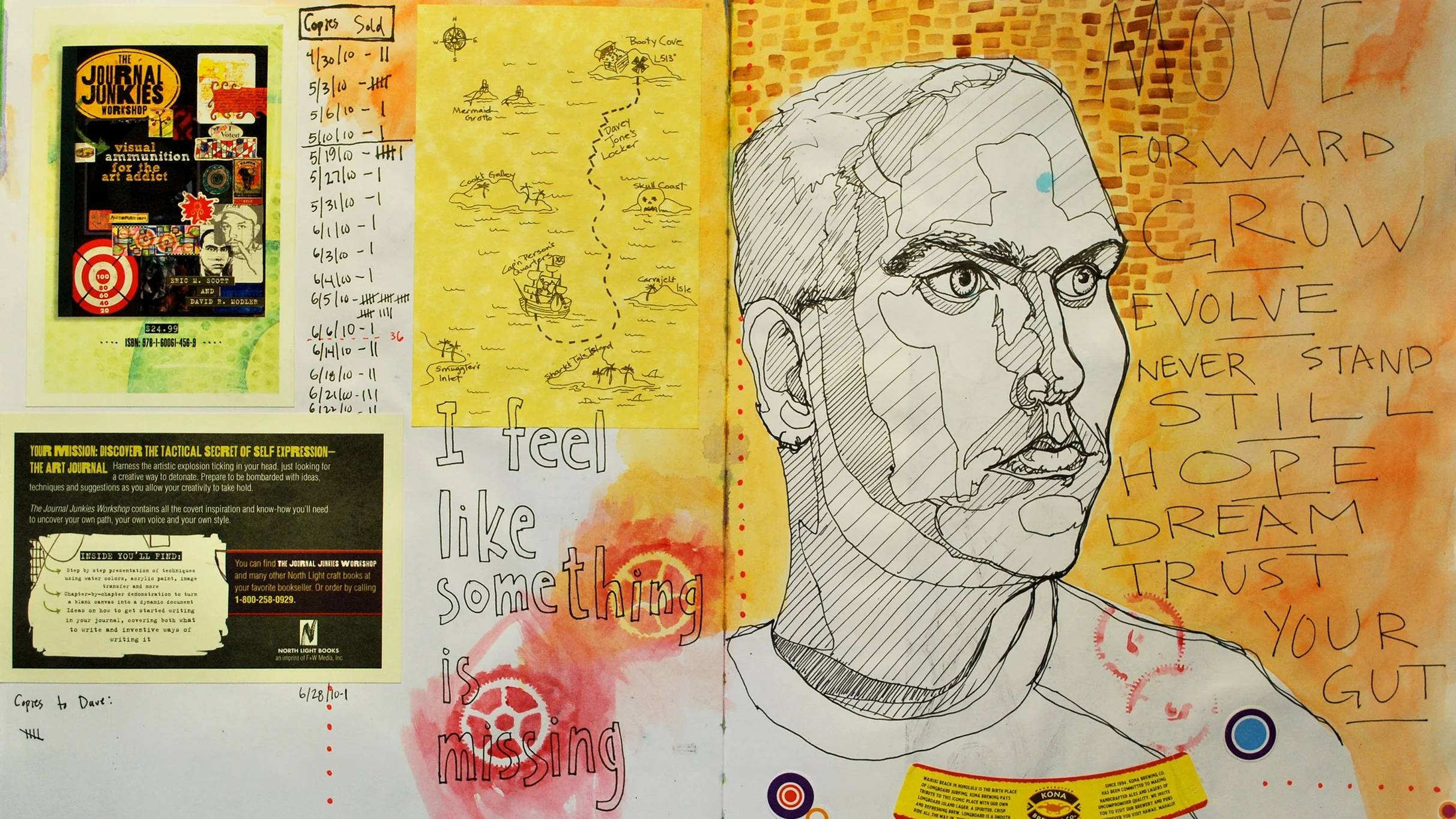Quotes are always good for the journal. One of my all time favorites is by artist Chuck Close, and it has become sort of my motto. "Inspiration is for amateurs. The rest of us just show up and get to work."
Too many people think that visual art, or music, or literature, or any art form comes into being as a piece of divine inspiration. As if the heavens opened up and from out of the ether, the idea was formed. Unfortunately, throughout the centuries, artists, musicians, writers, and such have done little to dispel this notion.
It is simple, art is work, but it's easy to work when things are going well. When your in the mood, its easy to pick up the brush, the pen, the guitar. But if you only worked when you were inspired or when conditions were right, you wouldn't work much, and your art would not be very good. So, when you don't feel like working, you work. When you're tired and sick, you work. When there are a million things to do, you work. That is how you become an artist.




















